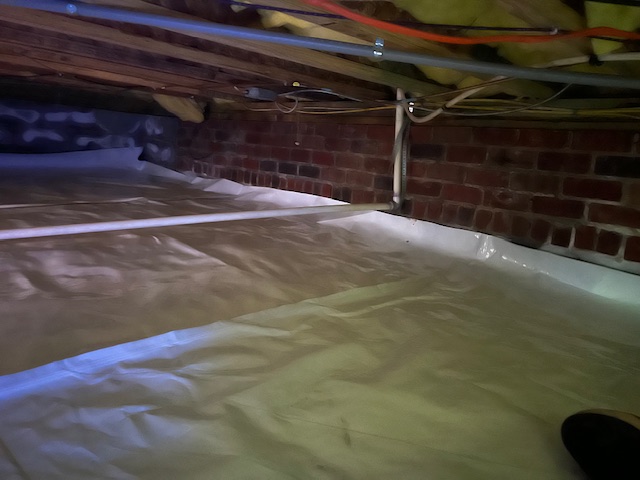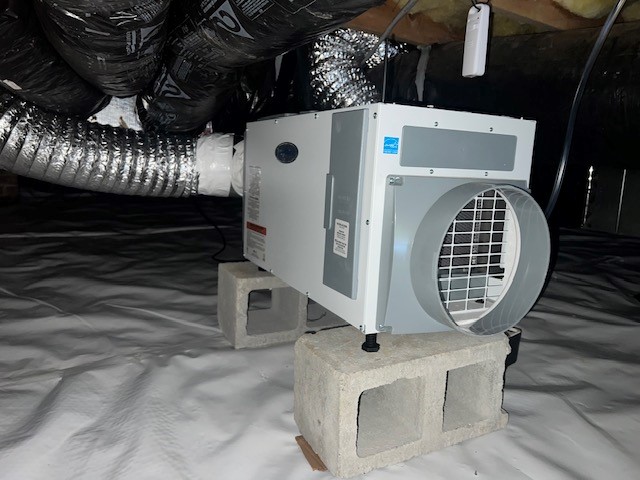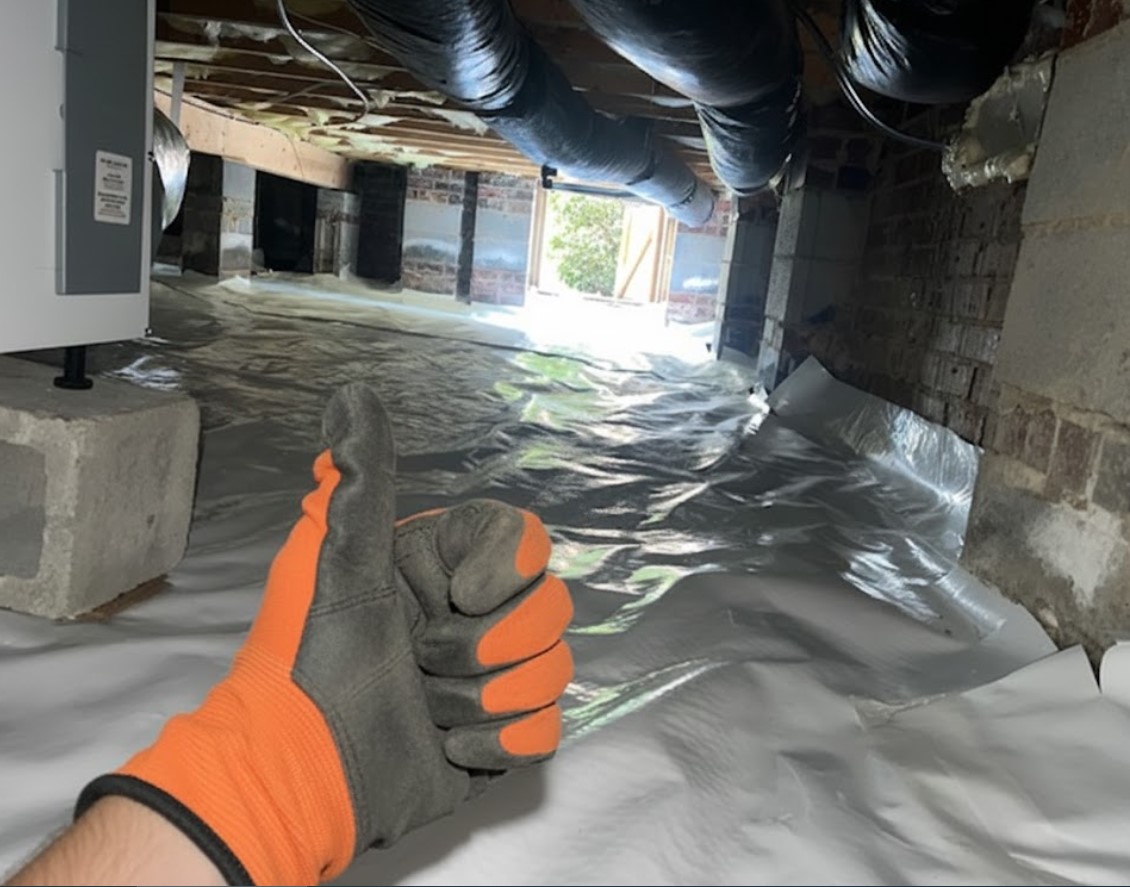Crawl Space Encapsulation Case Study
- Client:Concord, NC
- Date:October 15, 2025
- Info: Crawl Space Encapsulation

Project Snapshot
We completed a full crawl space encapsulation for a single-family home with a low, masonry crawl and active HVAC ductwork. Our goal was to stop ground vapor, stabilize humidity year-round, and create a clean, serviceable space for the homeowner and future trades. The scope paired a 12-mil liner package with mechanical drying and balanced airflow so the entire footprint benefits, not just the area near the equipment.
Where We Worked
This project sits in Concord NC, a climate that swings from muggy summers to cool, damp shoulder seasons. Those shifts push moisture into vented crawls and feed musty odors that work their way into living areas. We see this pattern often across Cabarrus County and nearby South Carolina suburbs, so our design choices focus on durability, simple upkeep, and steady performance regardless of seasonal swings.
How We Started
We began with a free inspection to document soil conditions, wall interfaces, duct runs, and clearances for equipment. We also mapped the airflow path we wanted inside the crawl, which is easy to overlook but essential for consistent drying. That field checklist guides our crew on installation day and gives the homeowner a transparent baseline for what we will deliver and how we will maintain it.
Liner and Wall Seals

Ground vapor is the constant, so we installed a 12-mil liner as the primary vapor barrier with full floor coverage, sealed seams, and an up-the-wall turn at the perimeter. We wrapped posts and sealed around penetrations so humid air cannot slip behind the membrane. The bright, continuous surface improves visibility, protects the structure from soil moisture, and gives service personnel a stable, clean area to move through.
Dehumidifier Selection

For active drying we installed an Aprilaire E100, sized for crawl volumes like this one and efficient at lower temperatures common under homes. The unit sits on blocks to keep it off the liner and out of harm’s way during heavy weather. We commissioned the system with a 50–55 percent RH setpoint, which protects framing, keeps odors in check, and avoids the over-drying that can stress wood.
Even Air Movement
Crawl spaces can develop stagnant pockets, so we included a balanced ducting kit that pulls return air from one end and discharges supply to the opposite side. This approach lets the equipment “see” the entire footprint, speeds dry-down after rain, and stabilizes conditions around joists and ductwork. It also reduces short-cycling, which helps the dehumidifier reach and hold the target humidity efficiently.
Why Conditioning Matters
A liner alone limits soil vapor, but sustained humidity control relies on a reliable crawl space dehumidifier. Vent openings, seasonal leaks, and normal diffusion still add moisture to the air. Mechanical drying closes that gap. By holding steady humidity, we protect wood and insulation, cut odor pathways into the living space, and reduce condensation risk on ducts that run through the crawl.
Measured Outcomes
After startup we tracked performance and tuned the setpoint to support steady moisture control across the footprint. Balanced airflow eliminated cold corners and warm pockets that otherwise slow drying. The homeowner now has a clean service zone, clear sightlines for future work, and a single point of adjustment on the controller. The system is simple to operate, with filters and drain checks planned on a predictable schedule.
Health and Structure Benefits
Keeping humidity in range directly supports mold prevention on joists, subfloor, and insulation. Drier framing resists softening and cupping, fasteners hold better, and metals in the crawl corrode more slowly. HVAC components operate in a cleaner environment, which helps efficiency. Just as important, fewer musty odors rise into first-floor rooms because the crawl no longer behaves like a damp, unmanaged plenum.
Craftsmanship That Lasts

Details separate a neat crawl from a durable one, which is why we work like a seasoned crawl space contractor. We place pads under blocks to protect the liner, label drains and power, and keep clear service paths. Penetrations get thoughtful sealing, not a quick swipe of tape. Those touches aren’t flashy, but they matter years down the road when a tech needs room to move and the homeowner wants predictable results.
Maintenance and Warranty
We recommend enrolling in our annual maintenance program to keep the system performing to spec. During each visit we verify relative humidity, check wood moisture content at representative joists, change filters, clean the intake screen, and test the condensate pump or drain. Small adjustments go a long way, and routine records give the homeowner proof that the crawl remains stable season after season.
Local Help When You Need It
Our team serves Crawl space encapsulation Concord NC and neighboring communities with inspections, design, and installations by local crews. If your crawl smells musty after rain or you see moisture staining on framing, we can help you reset that environment with a durable liner, balanced airflow, and a right-sized dehumidifier. Call 704-960-7906 for a free evaluation and a clear plan for a cleaner, drier crawl space.


